The Dorian scale is an intriguing and versatile mode that stands out in the world of music production for its unique blend of melodic beauty and harmonic complexity.
It can infuse your tracks with depth and emotion that other scales might not provide.
The Dorian mode is characterized by its versatility, capable of evoking moods that range from sorrow to optimism.
As a music producer, understanding the intricacies of the Dorian scale can help you expand your creative horizons and add a new dimension to your tracks.
In today’s article, we’ll be breaking down:
- What makes the Dorian scale special ✓
- What the Dorian mode consists of ✓
- Music theory essentials ✓
- Comparing the Dorian mode with other modes ✓
- The Dorian scale’s notes and intervals ✓
- How to achieve that unique Dorian sound in your tracks ✓
- Building chord progressions with the Dorian scale ✓
- Pro tips about Dorian modes in music production ✓
- Much more ✓
By the end, you’ll have a solid understanding of the Dorian scale and its applications in music production.
You’ll be able to experiment with this versatile mode and utilize it to create captivating tracks that resonate with listeners.
Whether you’re producing rock, hip-hop, EDM, or even jazz music, you’ll be able to manipulate the Dorian scale like a professional and give your own music a unique sound.
So, let’s dive in…
Table of Contents
- What is the Dorian Scale?
- The ‘Music’ Theory Behind the Dorian Scale
- The Dorian Mode vs Other Modes
- Relative Keys: Dorian Scale and Major Scales
- Dorian Scale vs Minor Scales
- Building the Dorian Scale: Specific Notes and Intervals
- Using the Dorian Scale in Chord Progressions
- Bonus: The Unison Dorian (Medieval) Advanced Scale MIDI Collection
- The Dorian Scale: Final Thoughts
What is the Dorian Scale?
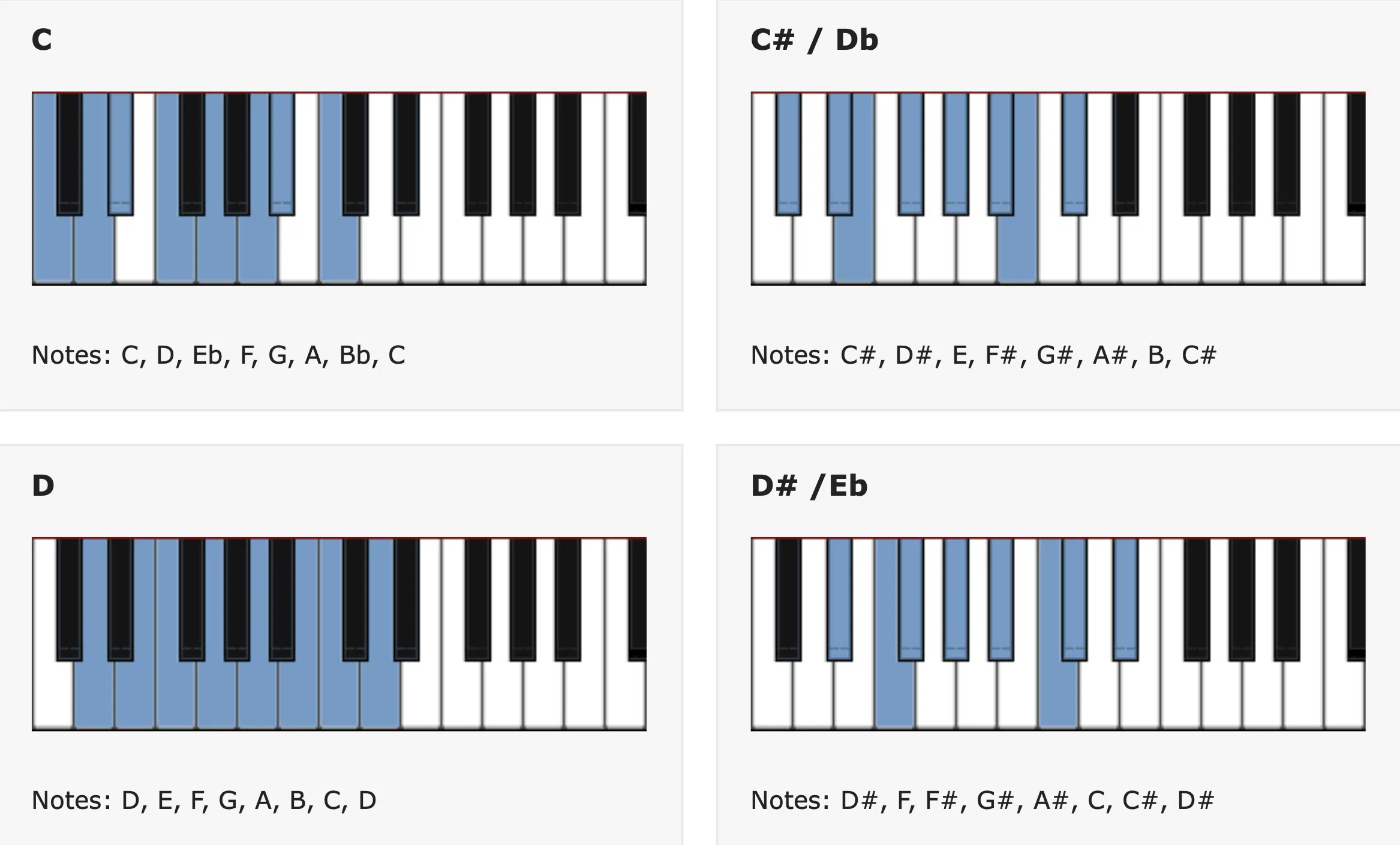
The Dorian scale, a staple in the world of music theory, is a seven-note scale that stands out due to its distinctive blend of intervals.
Originating from the major scale, it is essentially a modal scale, meaning it’s derived from the notes of a standard major scale, but starts and ends on the second scale degree.
This gives the Dorian scale a unique sonic footprint that sets it apart from more conventional major scales and minor scales.
In order to fully understand the Dorian scale, you’ll need to be familiar with its interval pattern structure.
The scale is comprised of the following sequence:
- Root note
- Major second
- Minor third
- Perfect fourth
- Perfect fifth
- Major sixth
- Minor seventh
The inclusion of a major sixth in a scale that is otherwise minor in nature is what defines the Dorian scale’s character 一 offering a sound that is melancholic yet somehow uplifted.
The Dorian scale can be formed in any key, and its pattern remains consistent.
For instance, in the key of D (thus, forming the D Dorian scale), the scale would be D (root note), E, F, G, A, B, C, and back to D.
This scale is distinguished from the standard D minor scale by the presence of the B natural, which is a raised sixth in comparison to the B flat of the D minor scale.
The ‘Music’ Theory Behind the Dorian Scale

To fully grasp the Dorian scale, you have to have a basic understanding of the underlying music theory.
The Dorian scale is one of the seven greek modes of the diatonic major scale.
These modes (including the Ionian mode, Phrygian mode, and Lydian mode) are essentially variations of the major scale.
Each one offers a unique sequence of intervals and specific mood/vibe.
The Dorian scale is specifically the second mode of the major scale (the Dorian mode).
This means that it is formed by starting on the second degree of any major scale and playing through the same notes but ending on the octave of this starting note.
For example, the D Dorian scale is formed by playing the C major scale but starting and ending on D.
This results in a scale that shares the same notes as C major (C-D-E-F-G-A-B) but centers around D as its tonic, or root note.
NOTE: If you’d like to learn all about music theory, we’ve got you covered.
The Dorian Mode vs Other Modes
When contrasting the modern Dorian mode with other musical modes, its unique characteristics become evident.
So, let’s break it down so you can get a better understanding of its intriguing sound.
-
The Dorian Mode vs Ionian Mode
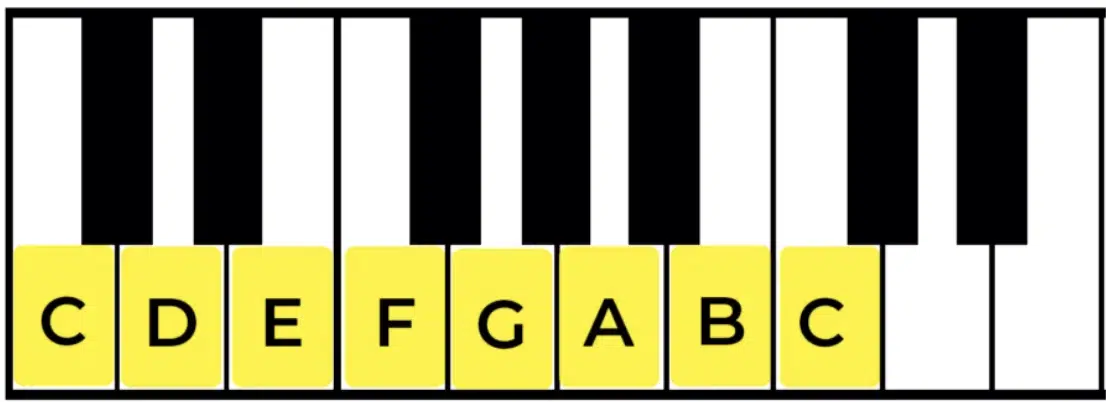
The Ionian mode, essentially the major scale, like C Ionian mode (C-D-E-F-G-A-B), is known for its bright and happy sound.
In comparison, the Dorian mode, such as D Dorian (D-E-F-G-A-B-C), introduces a more complex and nuanced emotional quality, due to its minor third and major sixth.
This creates a blend of minor tonality with an uplifting twist.
-
The Dorian Mode vs The Aeolian Mode & Phrygian Mode

The Aeolian mode, or natural minor scale, like A Aeolian (A-B-C-D-E-F-G), offers a deeper sense of sadness, with its minor sixth.
Meanwhile, the Phrygian mode, such as E Phrygian mode (E-F-G-A-B-C-D), is recognized for its exotic and tense sound, due to its flattened second.
Both of these modes contrast with the more balanced and versatile emotional sound of the Dorian mode.
If you’d like to know all about the Aeolian mode and Phrygian mode, we’ve got you covered.
-
The Dorian Mode vs The Mixolydian Mode & Locrian Mode

Mixolydian Scale Degrees
Similarly, the Mixolydian mode, like G Mixolydian (G-A-B-C-D-E-F), closely resembles the major scale but features a lowered seventh 一 giving it a bluesy, unresolved character.
The Locrian mode, less commonly used due to its diminished fifth, as seen in B Locrian (B-C-D-E-F-G-A), stands out as the most dissonant and tense among the musical modes.
These comparisons further highlight the Dorian mode’s unique position as a versatile and emotionally diverse scale.
Pro Tip
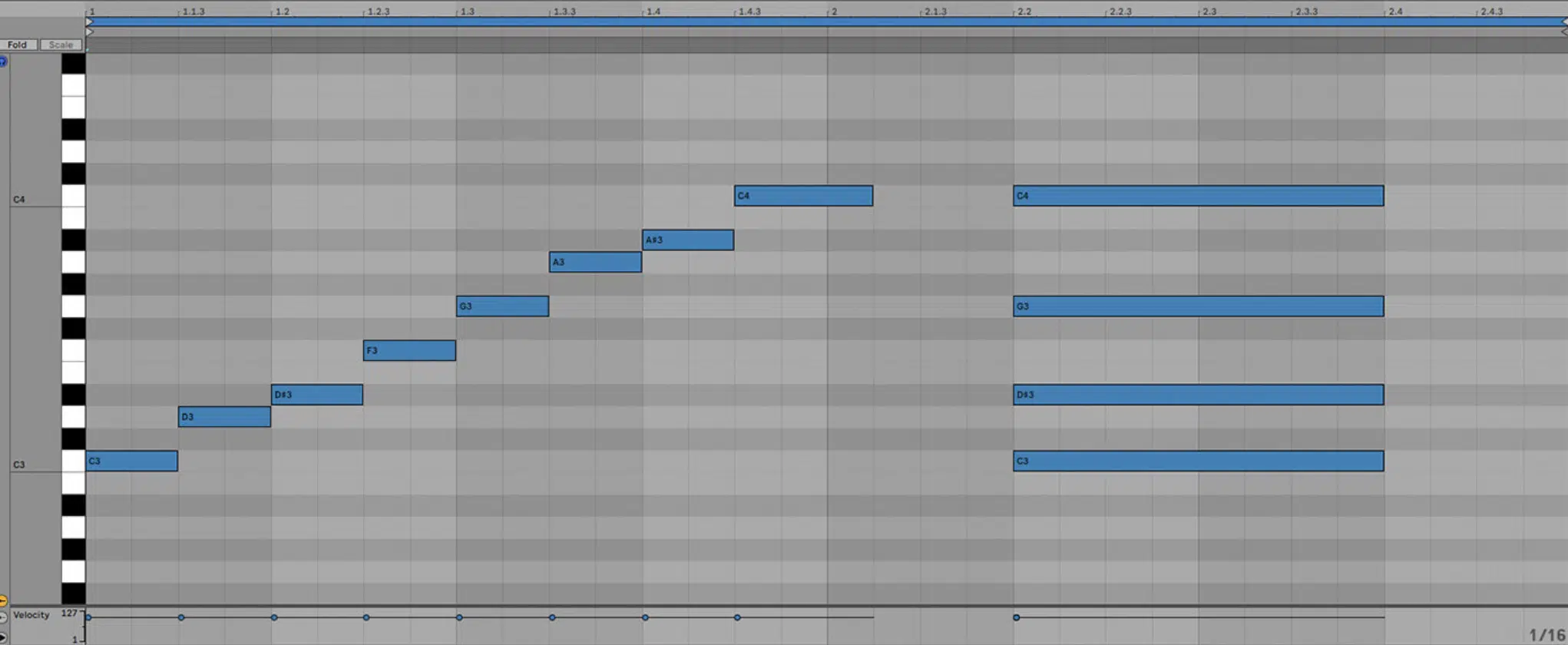
When exploring modes on a virtual piano (your piano roll), a fascinating example is the Eb Dorian, like C-D-Eb-F.
This Dorian mode, part of the seven modes dating back to Ancient Greece and medieval theory, demonstrates how a half-step (note: half-steps equal a semitone) shift alters all the notes 一 creating a unique scale.
Interestingly, while the D Dorian corresponds to all the white keys from D to D, the Eb Dorian provides a different perspective on the same concept.
It emphasizes the importance of root notes and their placement in modal music theory.
Knowing this will help you further understand the Dorian scale and connect to the historical evolution of these seven modes.
Relative Keys: Dorian Scale and Major Scales
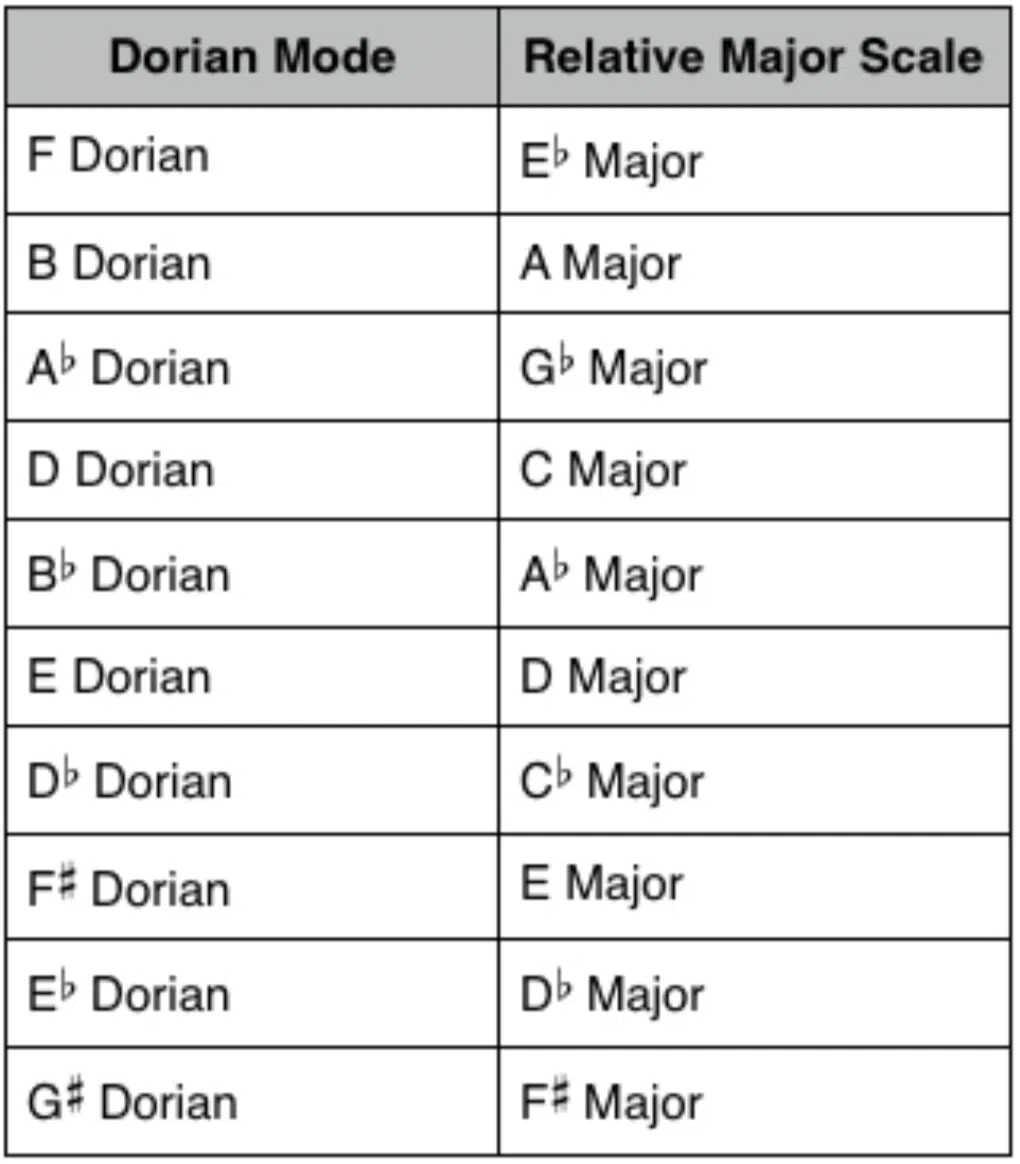
Comparing the Dorian scale to major scales can show you its distinct mood and versatility.
Major scales, like C major (C-D-E-F-G-A-B), are characterized by their cheerfulness and brightness.
The Dorian scale, on the other hand, such as D Dorian (D-E-F-G-A-B-C), maintains some of this brightness but introduces a subtle depth and complexity due to its minor third and major sixth scale degrees.
The major sixth in the Dorian scale is particularly noteworthy.
For example, in the D Dorian scale, the B natural (the major sixth) differs from the B flat that would be found in a D minor scale
This gives the Dorian scale a lift that doesn’t exist in traditional minor scales.
This unique feature allows the Dorian scale to convey a more versatile emotional spectrum than the joy of major scales (like the G major scale or C major scale).
The Breakdown:
- C Dorian – Bb Major
- C# Dorian – B Major
- D Dorian – C Major
- D# Dorian – C# Major
- E Dorian – D Major
- F Dorian – Eb Major
- F# Dorian – E Major
- G Dorian – F Major
- G# Dorian – F# Major
- A Dorian – G Major
- A# Dorian – G# Major
- B Dorian – A Major
Being familiar with the relative key of any given Dorian scale can seriously help you enhance your production skills.
Plus, you won’t have to rely on your DAW or the help of AI software to figure it out.
Dorian Scale vs Minor Scales
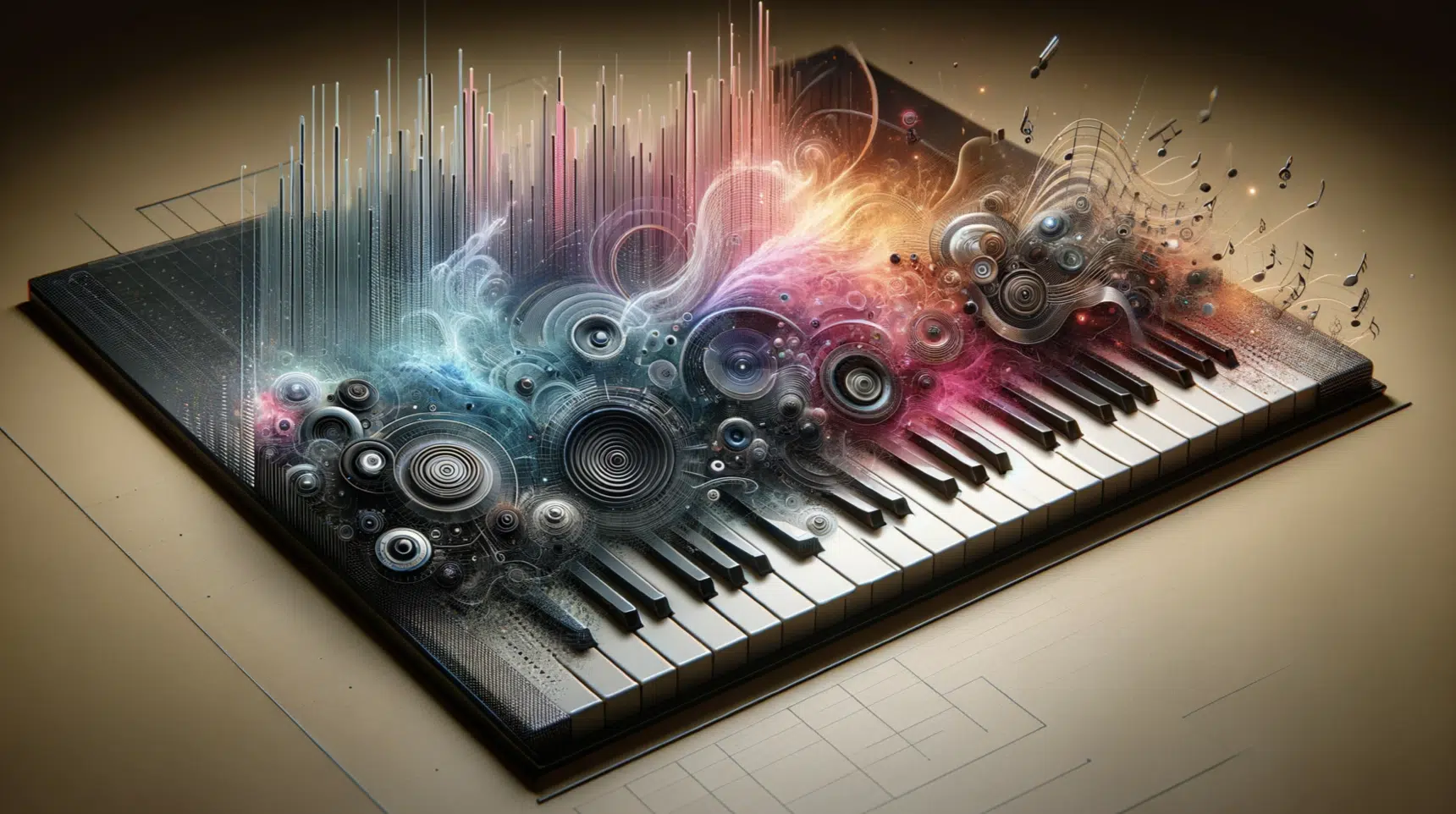
The Dorian scale’s relationship with minor scales reveals its unique standing in music theory.
Minor scales, such as A minor (A-B-C-D-E-F-G) and other minor scales, typically exude a somber, melancholic vibe.
The Dorian scale, like D Dorian (D-E-F-G-A-B-C), shares this minor quality but with an added layer of complexity due to its raised sixth.
Basically, it has a minor sound, with an intriguing, unique twist due to its unique patterns.
This raised sixth, a defining feature of the Dorian scale, creates a contrast with the flatter, more sorrowful sound of natural minor scales.
In D Dorian, the B natural (the raised sixth) contrasts with the B flat of the D natural minor scale 一 imparting a sense of hope and brightness not typically found in minor scales.
This subtle yet significant difference (the only difference that matters) sets the Dorian scale apart and really showcases it uniqueness and versatility.
Building the Dorian Scale: Specific Notes and Intervals

Constructing the Dorian scale involves understanding its intervallic structure.
The Dorian scale, as we covered, is defined by a specific pattern:
- Root note (tone/half step)
- Major second (semitone/whole step)
- Minor third (tone)
- Perfect fourth (tone)
- Perfect fifth (tone)
- Major sixth (semitone)
- Minor seventh (tone)
This dedicated pattern is consistent across all keys.
For example, in the D Dorian scale, this translates to the notes: D, E, F, G, A, B, C.
The key to the Dorian scale’s distinctive sound lies in its minor third and major sixth intervals.
These intervals provide the scale with its characteristic blend of minor tonality and an unexpectedly uplifting twist.
In the D Dorian scale, the F represents the minor third, adding a sadder touch, while the B (as the major sixth) introduces an element of brightness.
The combination of intervals creates that unique Dorian sound, both a bummer and subtly optimistic.
Intriguing combo, right?…
Well, that’s why the Dorian scale is celebrated for its unique sound, setting sets it apart from other modes.
Its combination of a minor third and a major sixth gives it a distinctive tonal character that is neither entirely major or minor.
-
Pro Tip

The major sixth in the Dorian scale, especially, plays a crucial role in defining its sound.
In the D Dorian scale, the B natural (major sixth) contrasts sharply with the B flat found in the traditional D minor pentatonic scale.
This single alteration from the minor to the major sixth infuses the Dorian scale with a sense of hope and an uplifting quality, even within its overall minor context.
Using the Dorian Scale in Chord Progressions
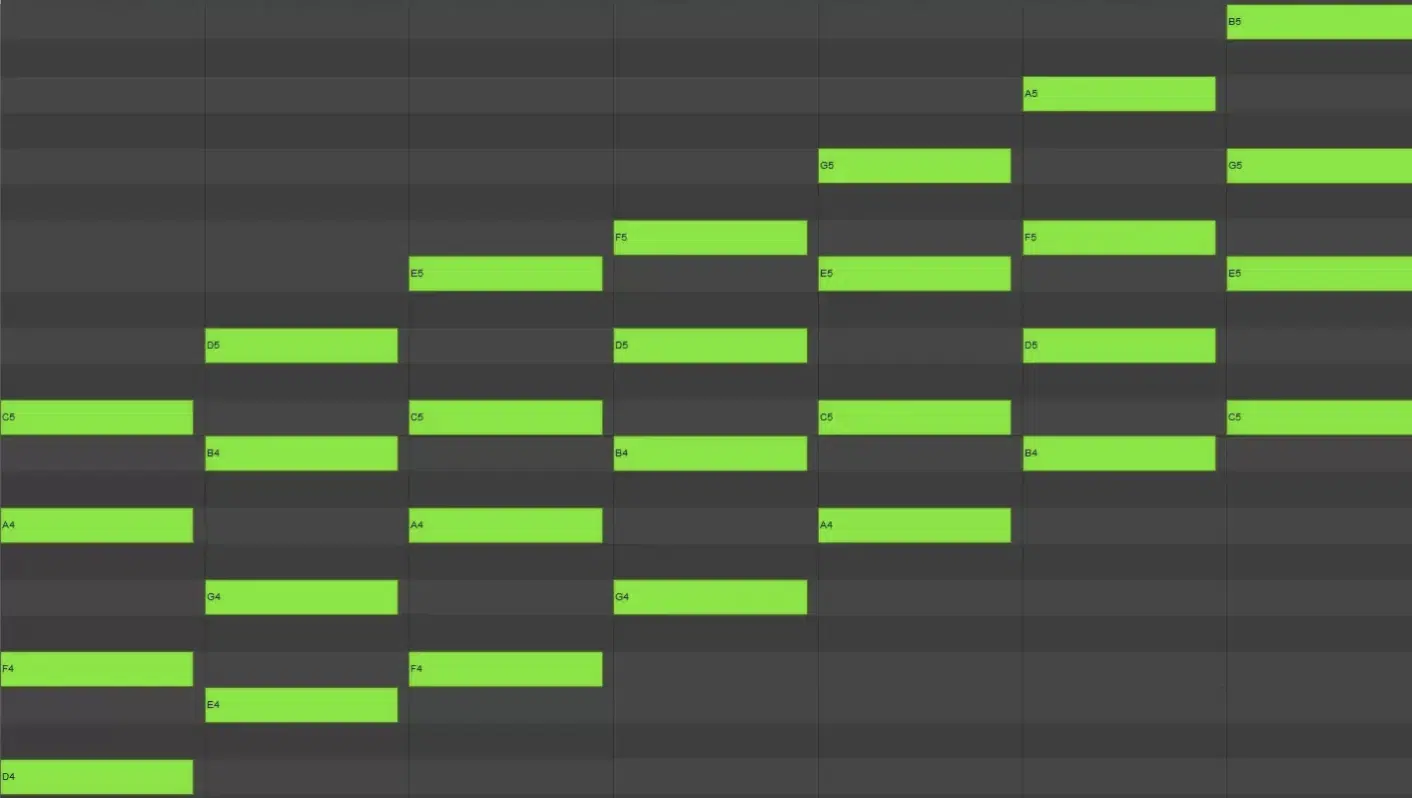
7th Chords in D Dorian
Chord progressions using the Dorian scale offer a unique blend of musical emotion and complexity.
When creating chord progressions in the Dorian mode, it’s essential to understand how the Dorian notes interact to create a distinct sound.
For example, in a D Dorian scale (D-E-F-G-A-B-C), a chord progression might:
- Start with a D minor chord (D-F-A) 一 Emphasizing the scale’s root
- Then, move to a G major chord (G-B-D) 一 Highlighting the Dorian scale’s characteristic major sixth (B)
This use of Dorian notes within chords creates chord progressions that are emotionally rich and harmonically diverse.
The Dorian scale’s flexibility in transitioning between moods is also super impressive.
A common progression in D Dorian might include chords such as Dm7 (D-F-A-C), G7 (G-B-D-F), and Am7 (A-C-E-G).
This note sequence not only uses the Dorian notes effectively but also incorporates seventh chords for added depth.
The shift from Dm7 to G7 capitalizes on the Dorian scale’s raised sixth, while the move to Am7 brings out the scale’s minor qualities, showcasing the Dorian scale’s dual nature.
The beauty of chord progressions in Dorian scales lies in their ability to create musical landscapes that are not easily accessible through other scales.
For instance, a progression in D Dorian could go from a Bb major chord (Bb-D-F), which is borrowed from the parallel minor, back to the root D minor chord.
This kind of modal interchange, common in the Doric mode chord progressions, allows for an exploration of chords outside the traditional diatonic framework.
It can help you add an unexpected twist to your own music.
-
Pro Tip

To effectively utilize Dorian scales in chord progressions, it’s beneficial to experiment with different chord voicings and extensions.
A chord progression like Dm9 (D-F-A-C-E) to G13 (G-B-D-F-A-E) in D Dorian not only uses the Dorian notes but also adds layers of complexity and richness.
These extended chords bring out the unique qualities of the Dorian scale.
It makes the progression more interesting and engaging (just look at Miles Davis music written).
The use of chords derived from Dorian notes offers a blend of minor mode moodiness and unexpected brightness, a combination that can make your music stand out and capture peoples’ attention.
-
Exploring Modal Interchange and the Dorian Scale
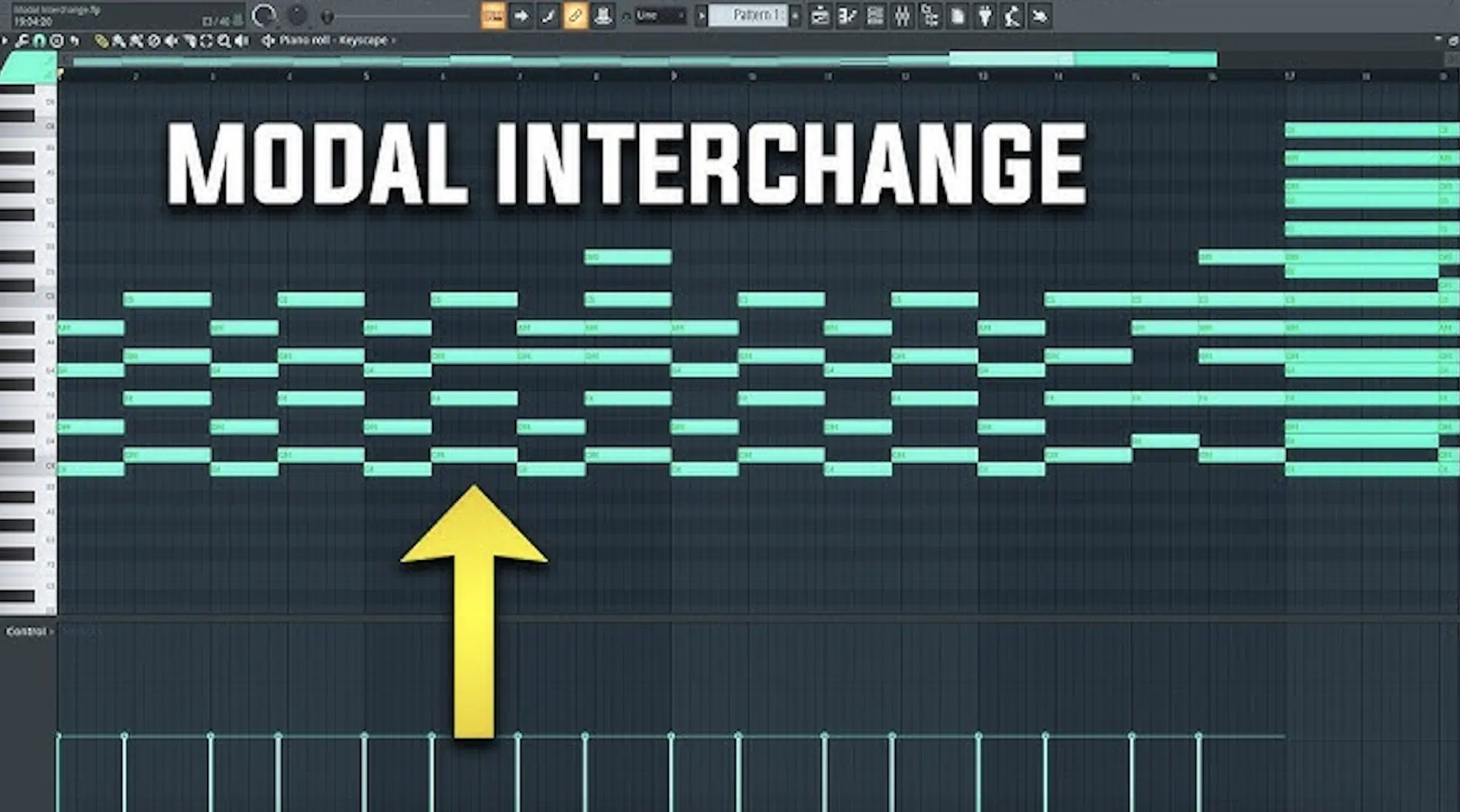
Modal interchange, the practice of borrowing chords from different modes, is particularly effective with the Dorian scale.
This technique allows for a blend of moods within a single piece 一 adding a layer of complexity to the song.
For instance, interchanging chords from the Dorian and Aeolian modes can create a progression that bounces between hopeful and saddening tones.
Using modal interchange in the context of the Dorian scale can also enhance harmonic interest.
It allows for unexpected turns in the progression, keeping the listener engaged.
This approach is especially useful in music genres that thrive on harmonic diversity, such as progressive rock and EDM.
Bonus: The Unison Dorian (Medieval) Advanced Scale MIDI Collection
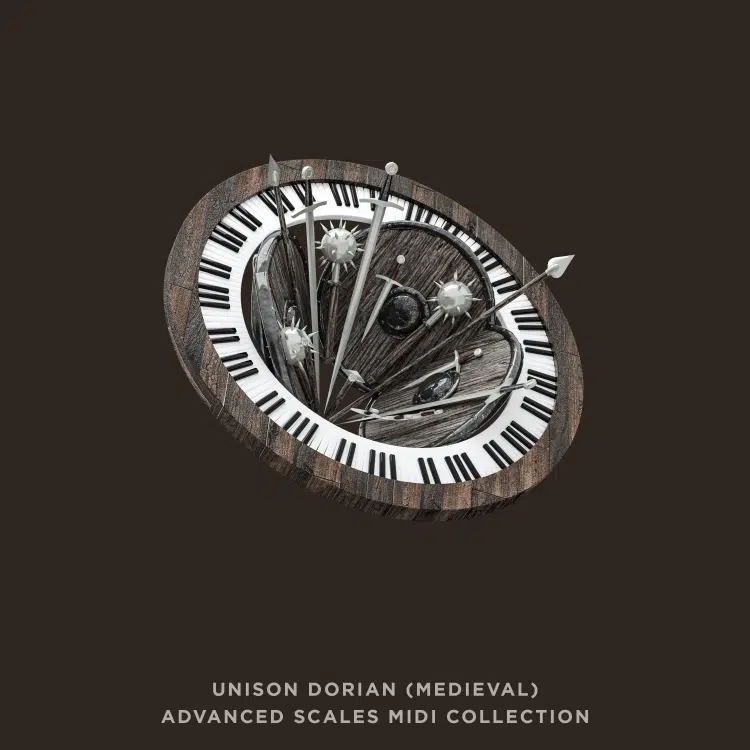
Since we’re talking about the Dorian scale, it’s essential I mention the legendary Unison Dorian (Medieval) Advanced Scale MIDI Collection is an invaluable pack.
This collection specifically caters to those looking to master the Dorian mode.
It offers a wide range of 1,100+ MIDI files that are expertly crafted to embody the essence of the Dorian scale (focusing particularly on a medieval vibe).
These MIDI files provide an extensive palette of chord progressions, melodies, and basslines 一 essential for creating music that truly captures the unique sound of the Dorian mode.
The precision and quality of these MIDI files make them an indispensable tool for both learning and implementing it.
What sets this collection apart is its innovative approach to blending the ancient sounds of the Dorian mode with modern music production techniques.
By focusing on a medieval theme, it offers a creative and distinctive angle, allowing you to explore historical or fantasy-themed music with authenticity and depth.
It provides an exceptional opportunity to create tracks that are both captivating and deeply rooted in musical tradition.
So, if you want to enhance your tracks with those unique qualities of the Dorian scale, this collection is invaluable.
Download This Game-Changing Pack Now
The Dorian Scale: Final Thoughts
From exploring its unique intervals to practical tips for incorporating the Dorian mode into your tracks, you now how the knowledge to utilize this intriguing scale like a pro.
As you continue to experiment and create with the Dorian scale, remember the versatility and emotional depth it can bring to your music.
Whether you are creating chord progressions, exploring modal interchange, or infusing your tracks with its distinctive sound, the Dorian scale offers endless inspiration.
So, make sure to embrace its unique qualities and let them inspire your musical journey.
There’s truly no limits to what kind of hybrid masterpiece you can create with the possibilities of this timeless scale.
Until next time…







Leave a Reply
You must belogged in to post a comment.